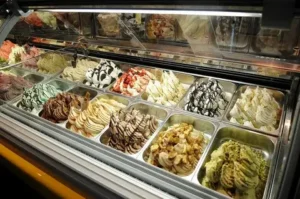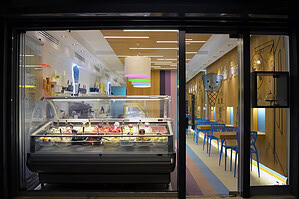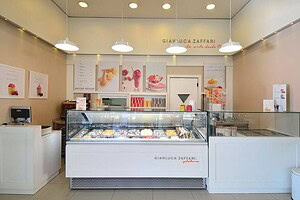If you’re thinking about opening an ice cream or gelato shop, one of the most important pieces of equipment you’ll need is the ice cream batch freezer. This machine basically decides whether your gelato will come out smooth, creamy, and consistent—or icy and disappointing. For anyone looking to buy one, it’s worth knowing what it is, how it works, and what to look out for before investing.
1.What Exactly Is a Batch Freezer?
An ice cream batch freezer is a professional machine that turns liquid ice cream mix into finished ice cream or gelato.
“Batch” means it works in fixed amounts per cycle (like 3L, 5L, or 15L at a time) instead of running non-stop.
“Freezer” refers to the fast freezing system inside, which chills the mix quickly while constantly scraping and churning so the texture stays smooth.
In short, this is the machine that takes your mix and makes it real ice cream.
2.Why Is It So Important for Gelato Shops?
Texture control – The freezer prevents big ice crystals and lets you control the air content (overrun), which is key for authentic gelato.
Small, fresh batches – Gelato shops usually make lots of flavors daily in smaller volumes. A batch freezer is perfect for switching flavors quickly.
Consistency – Whether you run a small store or a chain, the machine ensures the same quality every time.
3.Types of Ice Cream Batch Freezers
There are a few styles you’ll come across:
Tabletop batch freezers
Compact, makes smaller batches (2–6L).
Great for restaurants, small shops, or testing new flavors.
Floor-standing batch freezers
Bigger capacity (8–20L+ per cycle).
Designed for busier gelato shops with high daily demand.
Fully automatic batch freezers
Pre-programmed settings for time and temperature.
Easy for beginners—press a button and it does the rest.
4.What to Consider Before Buying One
If you’re shopping for a batch freezer, here are the main things to think about:
Daily output – How many liters do you actually need per day?
Brand & after-sales support – Italian brands like Carpigiani and Bravo are trusted in the gelato world, while local machines can be more budget-friendly.
Freezing speed – Faster freezing means less waiting and more turnover.
Ease of cleaning – Can you switch flavors quickly without too much hassle?
Budget – Prices vary a lot, from entry-level machines to high-end models.
5.Who Needs a Batch Freezer?
Entrepreneurs starting a gelato shop
Restaurants or cafés that want to serve their own ice cream
Ice cream shop owners upgrading old equipment
6.FAQ – Common Questions About Batch Freezers
What’s the difference between a batch freezer and a continuous freezer?
Batch freezer: Makes fixed amounts per cycle, great for gelato shops that need many small, fresh batches.
Continuous freezer: Produces ice cream non-stop, usually for large factories and industrial production.
How much does a batch freezer cost?
Small machines: $3,000–8,000
Mid-size professional models: $10,000–20,000
High-end Italian brands: $25,000+
It all depends on brand, capacity, and features.
How do I calculate the output?
Multiply capacity per batch × number of batches per day.
A 5L freezer × 8 cycles → about 40L per day.
A 15L freezer × 10 cycles → about 150L per day.
Can beginners use it?
Yes. Most modern machines have automatic programs, so even if you’re new, you’ll still get consistent gelato.
Which brands are popular?
Carpigiani (Italy) – industry standard, very reliable, but expensive.
Bravo (Italy) – innovative, professional-level.
Local/Asian brands – more affordable, good for startups.
How do I choose the right one?
Figure out your daily production needs
Set a budget
Compare brands and after-sales service
Look for a model that’s easy to clean and run
If it’s for gelato, avoid industrial-style continuous freezers
Final Thoughts
The ice cream batch freezer is the heart of any gelato shop. It’s what transforms your mix into a creamy, smooth product that customers will come back for. Choosing the right machine depends on how much you want to produce, your budget, and how serious you are about quality.
A good batch freezer is not just a cost—it’s an investment that saves time, improves product quality, and helps build your brand.




